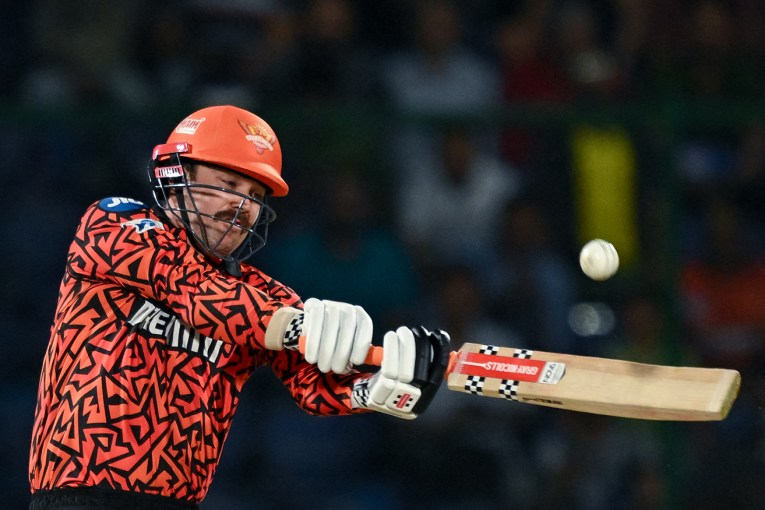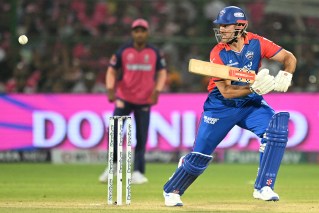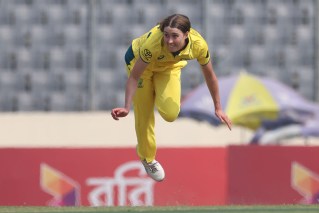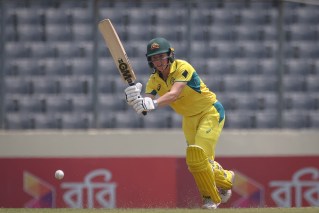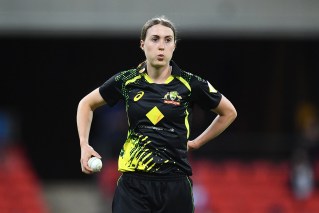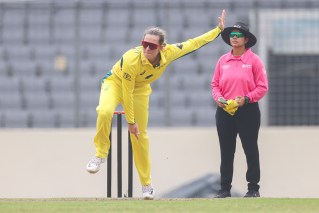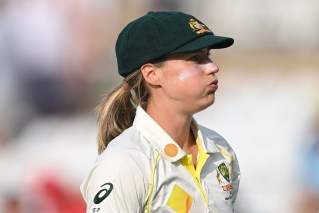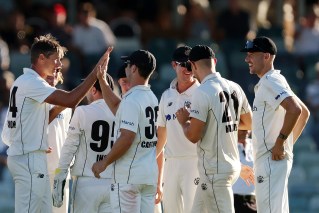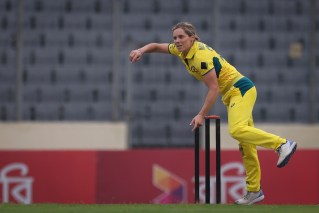George Bailey: Our Ashes solution?

One statistic doing the rounds in Australian cricket illustrates eloquently the dramatic shift in the game over the past fews years: George Bailey averaged 18 in first-class matches last summer.
Yet Bailey, on this seemingly flimsy foundation, seems to have already been slotted in for a spot in the fragile Australian batting line-up for the Ashes opener at the Gabba.
Bailey’s probable selection will be based largely on his brilliant performances in one-day colours for Australia, including his leadership on the current, ill-timed Indian tour.
On Wednesday night the Tasmanian cracked a brilliant 156 off 114 balls to power Australia to a total of 350.
Chairman of selectors John Inverarity was almost gushing in his praise for Bailey: “His performance in ODI cricket has been outstanding. Since he started 18 months ago, he’s been our best-performed one-day player in terms of average, aggregate runs, strike-rate. It’s a thrill to see him playing so well.”
So much so, it seems that neither Bailey nor the others touring India, who return on Monday, will be required to play in the Sheffield Shield matches that start the following the Wednesday.
Inverarity: “We’re not going to select the Ashes team just on the performances of that round of Shield and an Australia A game. Our minds are well made up before that.”
In other words, it seems that Bailey is already in and there will be no “bat-off” between contenders in the traditional first-class arena. (At this point, it should be noted in fairness to Bailey that he averages 38 in first-class cricket overall, so he is no slouch).
Likewise, David Warner’s perennially uncertain place seems to have been settled – for the first Test at least – by his bullying performances in the batting-friendly environment of the domestic one-day format.
As British cricket writer Scyld Berry observed this week: “Never before has Australian cricket been so incoherent as it is now.”
He argues in London’s Daily Telegraph that Australia is making all the mistakes that England once made, but has since rectified.
This includes “tinkering with every competition until the public ceases to know or care”. At least, he argues, England “preserved the integrity of the four-day County Championship as a rigorous competition. So the England Test team has had a proper breeding-ground and maintained a high, healthy standard. Do that, and everything else can follow”.
He has a point. The single greatest failure of Australian cricket has been its inability to produce a world-class Test batsman post-Michael Clarke. Not a one.
The best hope, in the opinion of this writer, is Warner (Test average 37) who, despite his brutal style, actually has a sound technique. While his 69-ball Test century against India was unforgettable, his effort in carrying his bat against New Zealand in Hobart in only his second Test showed that he was capable of playing at a different tempo and with a maturity that belies his off-field reputation.
Warner’s likely opening partner Chris Rogers (Test average 35) is an admirable character who plays late and sells his wicket dearly, but he is 36 and ideally Australia would be looking forward, not back. At it stands, he is an essential member of the top six.
Shane Watson (Test average 36) should have been discarded by now, his leaden-footed penchant for getting out lbw in his 30s and 40s well beyond a joke.
Michael Clarke (Test average 52) is the obvious exception, a worthy successor to Ponting. But even he is beginning to show signs of vulnerability against fast, short-pitched bowling and his back is obviously a week-to-week proposition.
Steve Smith (Test average 35) was one of the successes of the England tour, and hats off to the selectors for that. Still, he looks loose and strikes as more a No. 6 than a No. 5. Remarkably, such is the state of affairs there is talk that he could be the next skipper (although the Bailey elevation might change that).
Together, these five have a combined average of 39, short of the accepted pass mark of 40, despite Clarke’s impressive numbers. By contrast, England’s first five batsmen picked (Cook, Root, Trott, Pietersen and Bell) have a combined average of 46.
Australian cricket is paying a heavy price for downgrading the importance of the Sheffield Shield competition. Merv Hughes was right to condemn the scheduling that has resulted in Australia chasing cheap and forgettable runs in India, while the meticulous English have been in the nets preparing with a red ball against bowlers hand-picked to replicate the Australians at the Gabba. But, as Basil Fawlty said about life, we are “stuck with it”. At least for now.
For Australia to have any hope of regaining the Ashes, one of these top six will have to join Clarke in making the transition to world-class Test batsman. Increasingly, that means making the transition via the lucrative shorter forms of the game. Who know, perhaps George Bailey is the man?
[polldaddy poll=7518752]
